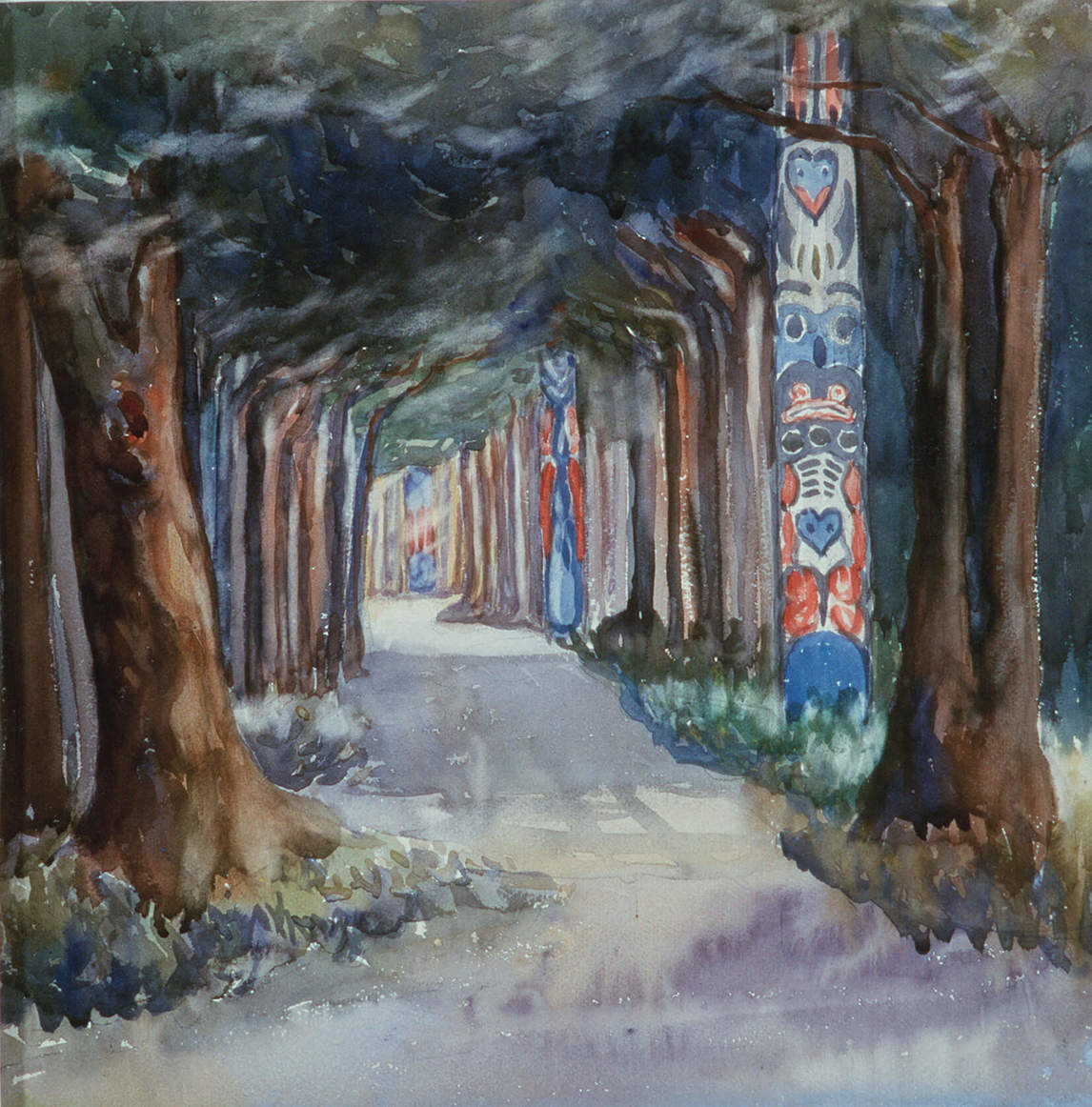The watercolors of Emily Carr

This article is part of a series about the watercolors of famous artists.
Do you know any famous watercolor artists? I mean “famous” like Picasso, Monet or Van Gogh?
While all of these painters used watercolors in their practice, we think of them as oil painters. For some reason that I haven’t figured out yet, none of the older painters chose to dedicate themselves to watercolors.
So, it has now become a quest of mine to discover the watercolors of famous painters.
We recently took a short holiday to Victoria, British-Columbia where we visited museums and art galleries.
Everywhere we went we saw paintings by Emily Carr (1871-1945) who would have celebrated her 150th birthday this year.

For those of you who don’t know her, Carr has become the Monet of British-Columbia, Canada. I know this because her work can be found in every major museum and art gallery in Canada and on mugs and T-shirts sold in those same institutions. 😉
Her work is beautiful, and she is recognized for her stunning paintings in oil and watercolors documenting the totems and buildings of the indigenous people of the north-west coast. She was one of the pioneers of Modernist and Post-Impressionist styles of painting in Canada, but she was not recognized until late in her life.

For me, it was a revelation to discover her watercolors. They are bright and fresh and show how taken she was by the beauty and color of the work of the indigenous artists she saw in her travels. One can only imagine how transforming the discovery of this work might have been for her.
If you are in Victoria BC, you can see her work at the Art Gallery of Greater Victoria and the Royal BC Museum and Archives.
Water-cooler chat
- How much does an Emily Carr painting cost? Paintings by Emily Carr have fetched over $2 million dollars at auction (CBC News).
- What are the major themes of Emily Carr's paintings? Nature and Native culture were the two main themes of her work which she blended with her own unique style (Wikipedia).
- What was Emily Carr's last painting? As time went on, Emily Carr became more concerned with environmental damage caused by the industrial economy. One of her last painting, Odds and Ends (1939) shows a few remaining trees in a clear-cut area (Wikiart).
Learn more about Emily Carr's work
(Disclaimer: This list contains affiliate links. If you use these links to purchase these book, Arts of Course may earn a small commission. Thank you.)
- "Emily Carr Collected" by Ian Thom. About one hundred works are reproduced in this affordable book from Carr's early watercolours in Skidegate and Alert Bay on the northwest coast to the breathtaking oils of the British Columbia landscape that marked her later career.
- "Emily Carr: Fresh Seeing - French Modernism and the West Coast" by Kiriko Watanabe, Kathryn Bridge, Robin Laurence and Michal Polay. How Emily Carr's work was transformed by a sixteen-month trip to France. The book showcases the paintings, drawings, and watercolours that she produced in France, as well as the works she created upon her return to the West Coast of Canada in 1912.
- "Emily Carr and Her Dogs: Flirt, Punk and Loo" by Emily Carr. A dog lover herself, Emily Carr had a kennel for a while raising Old English Sheep Dogs in Victoria. She documented her joys and tribulations in 25 vignettes that are accompanied by 12 lovely drawings of dogs, which she put together to depict a year in the life of her dogs.
Categories: : Watercolor Artists
 Sylvie Peltier
Sylvie Peltier 